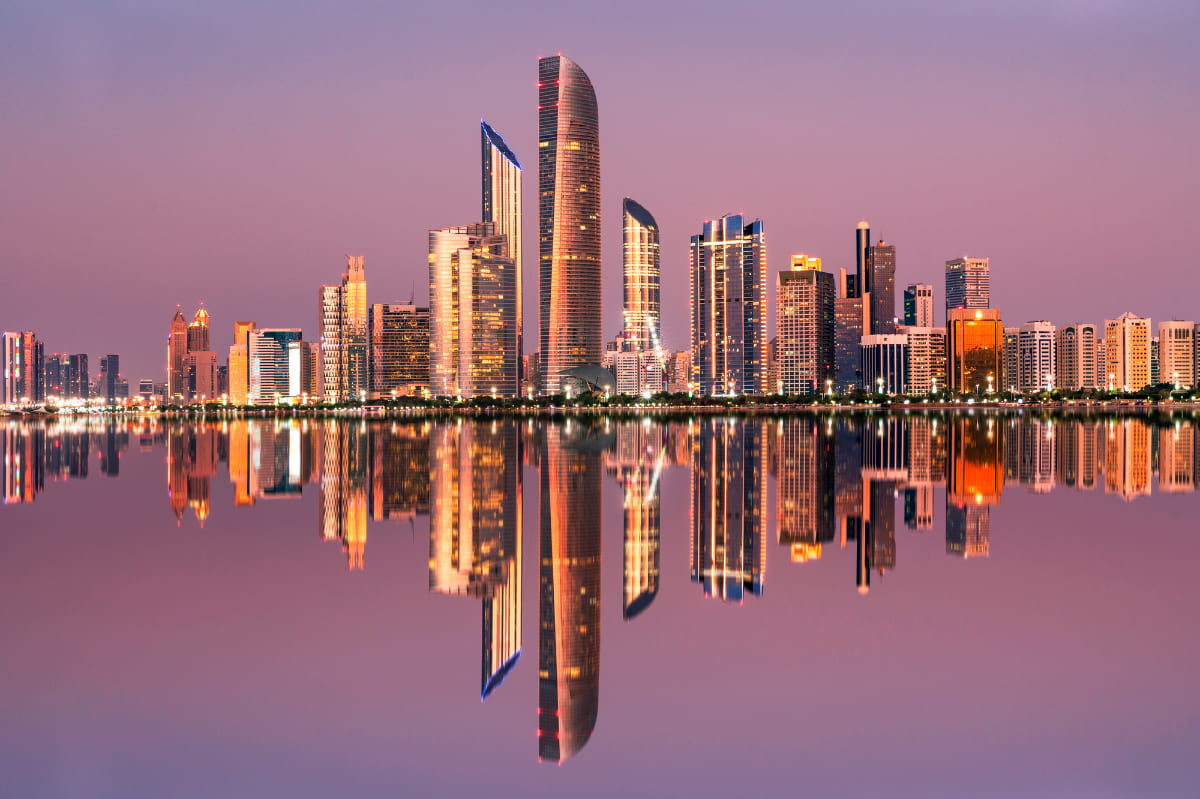As the desire for distinctive accommodation increases, hotel designs have undergone significant transformation over the past few decades. From architecture to interior style that captures the essence of a destination, a hotel’s design can truly set it apart.
Regardless of what type of hotel business you want to work in, knowing about hotel design aspects can help. In this article, we will explore the key elements that contribute to creating a memorable design, while providing insights into how to acquire the relevant skills and experience to develop a hotel with a distinguished aesthetic.
Introduction to hotel design
A hotel’s architecture and interior design go beyond how things look towards transporting guests into immersive experiences that incorporate culture, geography and a sense of place. Executed well, a hotel can present guest spaces that flawlessly integrate art, architecture, design and decor. There is a genuine depth of skill that goes into creating a memorable hotel.
Types of hotel designs
There are a variety of hotel designs that cater to different preferences and styles. From traditional to contemporary or minimalist, each design offers unique features and atmosphere. While different types of hotels might tend towards a specific style, there is a lot of freedom when designing a hotel to incorporate elements that will appeal to a wide range of guests. We will look at a few of the most common types of hotel design below.
Modern design
In modernist design, simplicity and functionality are key. Clean lines, neutral colors and uncluttered space define the aesthetic. Structural elements can be highlighted using materials such as steel, glass and concrete to create visually stunning spaces that often have a calm, tranquil feel.
Traditional design
Drawing inspiration from different eras, traditional design is aimed at creating a cozy and familiar atmosphere. It can incorporate luxurious textures, timeless furniture and intricate details to cultivate an authentic experience.
Contemporary design
Contemporary design embraces the present by incorporating the latest developments and trends. It’s a flexible style that can celebrate a combination of bold colors or create pleasing patterns with neutral tones and often showcases unique materials or singular artworks.
Minimalist design
Focusing on meaningful simplicity, minimalist design achieves this by using open floor plans, carefully chosen interior elements and a restrained color palette to create tranquil spaces. The emphasis is placed on quality rather than quantity.
Factors influencing hotel design
Designing hotels involves considering a range of factors beyond just aesthetics. The goal is to create spaces that not only look appealing but also cater to guests’ needs, help the hotel stand out in a competitive industry and possibly reflect its setting.
Location
Design choices for hotels are often influenced by the surrounding geographical context or the history of the structure. In rural areas, boutique hotels might highlight local artisanry and embrace a more rustic feel, while urban establishments tend to incorporate sleek architecture and modern technology. Additionally, hotel designs should also take into consideration the climate to ensure guests are comfortable.
Target audience
When designing a space, it’s important to consider the needs and preferences of your target customers. For example, business travelers appreciate efficiently calm surroundings and access to business facilities. Similarly, families may prioritize safety measures and pool or play areas that are child-friendly, while those seeking luxury may expect decadent amenities and dramatic public spaces.
Size of the hotel
The size of a hotel will affect the design strategies employed. Large resorts may offer a range of spaces with different functions, whereas smaller properties usually tailor their spaces to a specific clientele. Talented designers can skillfully transform buildings created for another purpose into successful and atmospheric designs for small hotels.
Hotel interior design
Designing a welcoming and unforgettable interior is crucial for creating a memorable guest experience in a hotel, whether you’re managing one of the top hotels in the world or own a small B&B. Important elements that contribute to cohesive and alluring hotel interior design include lighting, furniture, colors and textures.
Lighting
Lighting is one of the most important aspects of creating a pleasant space. And it’s crucial lighting is tailored towards an area’s specific purpose. For bedrooms, warm and cozy lighting sets a relaxed atmosphere, while fitness areas thrive with bright and invigorating lighting.
Strategically placed lighting in lobbies or bar areas can enhance architectural features and create a welcoming atmosphere. Additionally, incorporating task-specific lighting, such as reading lights, provides functionality where it’s needed.
Furniture
When choosing furniture, it’s crucial to find a harmonious blend of style and comfort. Consider versatile seating options such as sofas and dining tables that can cater to a range of guest requirements. It’s important to select pieces that complement the color scheme and, for high-traffic areas, prioritize durability.
Colors and textures
Colors and textures can completely transform a space. Rich hues and luxurious textiles can change even a basic area into a luxurious retreat, while the use of vibrant color palettes can inject life into boutique hotel settings. Earthy tones tend to create a warm and inviting atmosphere, whereas cool blues induce a sense of tranquility. Bold colors and unusual textures can also be incorporated to improve neutral schemes and add sophisticated accents.
Sustainable hotel design
As constantly evolving businesses, hotels need to stay abreast of developing trends. With increasing emphasis on environmental sustainability, it’s now becoming essential for hotels to incorporate sustainable design principles.
Energy efficiency
Hotels consume significant amounts of energy and there is now a shift to eco-friendly hotel designs that don’t use as much power. However, it’s important not to compromise guest comfort – for example, you can’t just keep the heating low all year round. Some key energy-efficient design elements in hotels are:
- Natural lighting: embracing natural light reduces dependence on artificial lighting, thereby reducing energy costs and consumption
- Energy-saving appliances: equipping rooms with energy-efficient appliances can significantly cut down on power consumption and associated costs
- Insulation: good insulating materials embedded in ceilings or walls limit heat transfer and can reduce heating or cooling requirements indoors
Water conservation
Water resources are significantly affected by tourism, especially large hotels in rural areas. It’s now vital to incorporate water-saving strategies into hotel design to promote sustainability. These include:
- Low-flow fixtures: these fixtures substantially reduce water usage without sacrificing guest satisfaction
- Rainwater harvesting systems: systems that collect rainwater from roofs for non-potable uses such as garden irrigation or flushing toilets
- Greywater recycling: reusing greywater (water previously used for washing dishes or from sinks) for non-drinking purposes decreases overall freshwater demand
Innovative technologies in hotel designs
Hospitality and tourism technology have revolutionized travel and this has had an impact on smart hotel designs. Tech-centric designs now cater to modern travelers, seamlessly merging luxury and convenience for a better overall experience.
Smart room features
Modern hotel designs incorporate a variety of advanced features in rooms to improve guest comfort and satisfaction. We discuss some of the most notable examples of smart room technology below:
- Controlled environment: some designer hotels have begun using AI-based systems for environmental controls. By learning patterns from previous guests, these systems can anticipate room temperature preferences, adjust lighting conditions or even suggest local attractions
- Smart mirrors: modern hotel design has embraced smart mirrors that offer personalized greetings, weather forecasts, news updates or traffic information while guests are getting ready for their day
- Voice-activated services: ‘OK Google’ or ‘Hey Siri’ can now help you request additional towels, schedule wake-up calls or order room service without picking up a phone
Robotic services and automation
The advent of automation in recent years has influenced contemporary hotel designs too. By implementing robotic services and automation into their operations, establishments can further improve efficiency and customer service delivery. Among the more prominent applications are:
- Robotic concierge: offering round-the-clock assistance to guests, from providing directions in the establishment to answering inquiries about local attractions
- Automated cleaning: maintaining cleanliness standards in high-traffic lobby or restaurant areas with automated cleaning devices such as robotic vacuum cleaners
- Robot delivery system: some routine tasks such as delivering late-night snacks or extra pillows could be handled by robots navigating using floorplans programmed into their system
Hotel lobby design

The lobby is perhaps one of the most important aspects of hotel design. This is the entry point for guests and an area that sets the tone for their entire stay. It’s vital to get this space right, as it’s often the first impression visitors have of your establishment.
Layout and furniture arrangement
The hotel lobby is usually the first part of the hotel that guests experience. Proper layout and furniture arrangement are vital for an inviting ambiance. Designs should incorporate:
- Clear traffic flow: guiding guests to the reception and other areas with ease
- Relaxation zones: creating comfort with clustered lounge furniture
- Aesthetic comfort: balancing style and function with furniture inspired by the locale
Lighting and color scheme
There are two other pivotal factors affecting your hotel lobby aesthetic – lighting and color scheme. Designers need to factor in:
- Varied illumination: warm lights create cozy areas, cool lights offer modernity and statement fixtures attract attention
- Natural light optimization: for sustainability and as a feature of smart design and use of materials
- Thoughtful night lighting: accentuate details without overpowering the space
Then there is color scheme unification and mood-setting, which needs to:
- Tie zones together: select a scheme that coordinates diverse areas
- Borrow insights from hospitality design: apply practical tips from design magazines and inspiration from appealing hotels
Restaurant and bar designs in hotels
The design of hotel restaurants and bars profoundly impacts guests’ experiences. Creating well-designed spaces that align with the hotel’s theme and encourages enjoyment is key.
Seating arrangements and décor
Effective seating and inviting décor plays a vital role in improving the dining environment, so designs should include:
- Booths: offer privacy and intimacy
- Indoor/outdoor seating: provide unique views based on location
- High-top tables: ideal for casual bar conversations
- Communal tables: encourage interaction, particularly among millennials
Décor options range from classic elegance to contemporary minimalism, for example:
- Classic design: combines sophistication with coziness
- Modern styles: caters to contemporary tastes with sleek lines
- Themed style: sets the hotel apart with a distinct approach.
Lighting and music
Thoughtful lighting and music choices significantly influence the dining experience. Lighting options include:
- Ambient lighting: comfortable illumination without shadows
- Task lighting: positioned above tables for clear visibility
- Mood lights: dimmers for adaptable ambiance
- Statement pieces: chandeliers for dramatic emphasis
Music selection also impacts the atmosphere, so consider:
- Upbeat genres: motivates staff efficiency during busy hours
- Slower tunes: creates a relaxed evening ambiance
- Curated playlists: builds rapport and encourages repeat diners through personalized preferences
How to learn about hotel design
Learning about hotel design and planning is a comprehensive process that involves understanding the various aspects of architecture, interior design, hospitality industry standards and practical considerations. The following steps will help you embark on this learning journey:
- Start with research
- Enroll in courses
- Attend workshops and seminars
- Build your professional network
- Study hotels and case studies
If you want to learn all about hotel design, you should also aim to get some knowledge of the hospitality business. You can do this by studying for a hospitality degree at a world-renowned school.
Whether you want to design and manage hotels or oversee the design of five-star luxury venues, our courses combine teaching from industry experts with opportunities to get experience and build essential professional networks.

Conclusion
Hotel design requires a delicate balance between creating an inviting atmosphere and ensuring optimal functionality. Every element, from the overall architecture to specific details such as lighting, textiles and furniture must prioritize guest comfort and satisfaction.
If you’re interested in pursuing a career in hotel design and planning, it’s beneficial to gain experience and qualifications that specifically cater to the hospitality industry and provide an understanding of delivering exceptional customer experience. This will provide the valuable knowledge that can be the basis of a distinguished hotel design career. Whether you aspire to establish your own hotel or pursue a career as a designer or manager in the hospitality industry, staying informed about the latest trends and aspects of hotel design is important. You can do this by studying for a hospitality or hotel-related qualification at a renowned institution such as Les Roches.
Main Image:
Carlina Teteris/ Moment Via Getty Images




